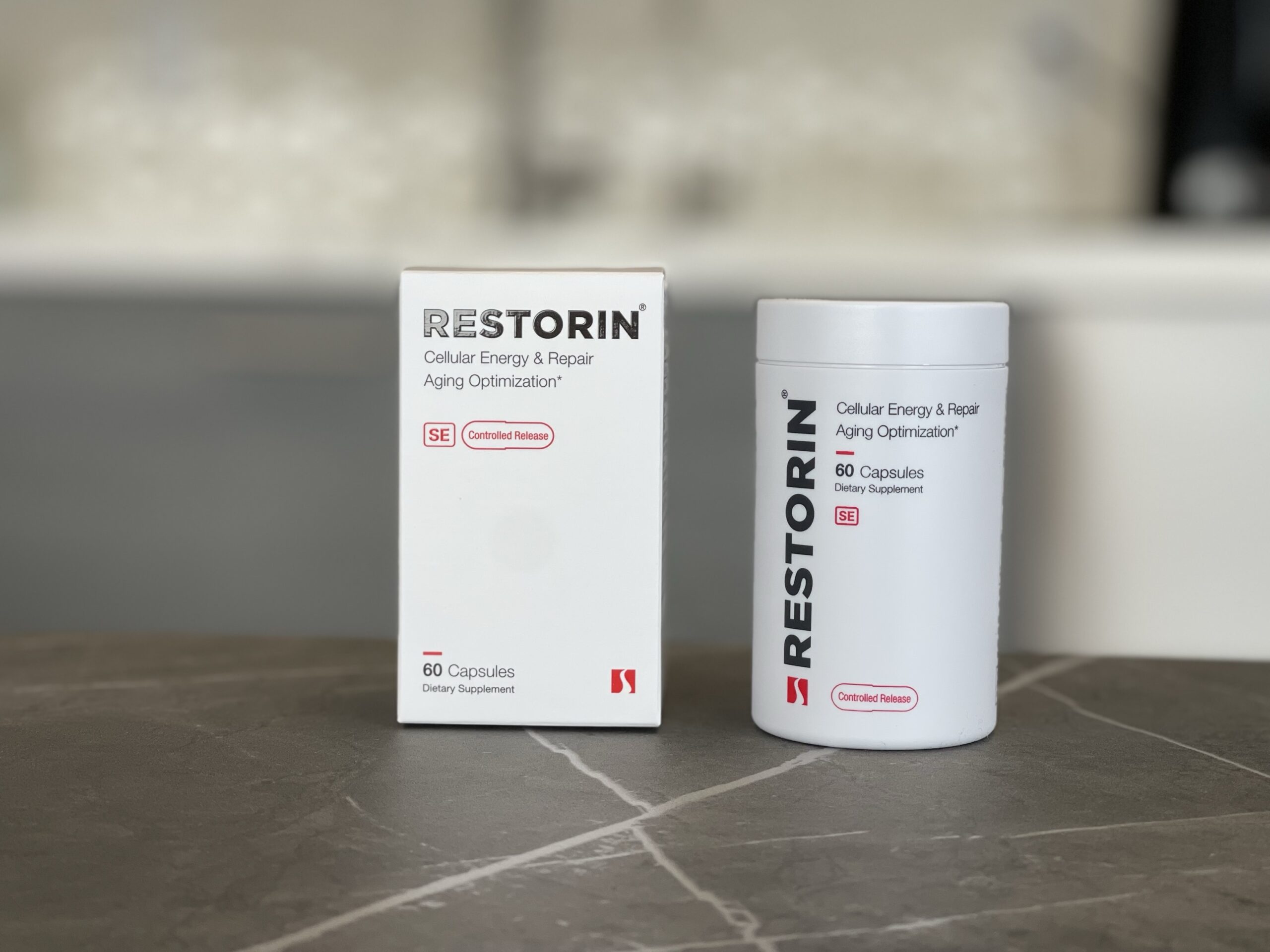RESTORIN is designed to activate key longevity pathways, like repair, mTOR, sirtuins, and cognitive health through a scientific approach based on SRN-901.
In the quest to combat the effects of aging, new products emerge regularly, but few offer the consumer a depth of scientific research and innovation. So, we asked the question, “Is RESTORIN, developed by Seragon Biosciences, is one of the few exceptions?” Initial investigations into the information places Seragon solidly in the camp of R&D Longevity Biotechnology companies. They appear to have used internal research prowess to improve the licensed patents from prestigious institutions like Harvard, Mayo Clinic, and Scripps. From these, the composition of RESTORIN could tap into DNA repair, cellular rejuvenation, and inflammation reduction technologies, among others.
Although some would disagree, the goal of longevity science is clear: to use a multifaceted approach that targets multiple pathways of aging to extend healthspan and prolong lifespan. Let’s explore the science behind RESTORIN, and uncover if this product has emerged as a unique solution for longevity interventions.
Scientific Targeting of Key Aging Pathways:
Powering Cellular Longevity Through DNA Repair
Accumulation of DNA damage has long been proposed as a fundamental driver of aging, and this pathway can involve longevity-associated sirtuin pathways. When combined, these pathways are integral to maintaining the integrity of DNA, ensuring that cells replicate accurately and remain healthy throughout the body. Research into these pathways suggests they play a crucial role in reducing the risk of age-related degeneration by improving cellular health.
Spring Cleaning Through Senolytic Pathways
Inflammation is often regarded as a hallmark of aging, and senescent cells contribute to state of chronic inflammation. Senescent cells accumulate over time, and contributing to tissue damage through this inflammation. By targeting senescent cells for clearance, research has shown a reduction in systemic inflammation, healthier cellular environments/tissues, and an increased lifespan in some animal models. This extension of lifespan has made senolytics a key focus for those looking to extend their healthspan. Additionally, clinical trials using 3 senolytics are currently being investigated, reinforcing the idea that aging can be mitigated by addressing its root causes.
Balancing mTOR and AMPK Pathways
In addition to targeting DNA repair and inflammation, longevity biotechnologists are excited about the modulation of mTOR (mechanistic target of rapamycin) and AMPK (adenosine monophosphate-activated protein kinase) pathways. These pathways are essential for balancing cellular growth and energy production, with mTOR inhibition playing a significant role in reducing age-related degeneration. In contrast, AMPK activation promotes cellular energy balance, mimicking the effects of caloric restriction—a proven method for extending lifespan in numerous species.
Mental Methylation Pathways
While physical aging is a primary concern for some, cognitive decline surpasses this worry for many. Within the brain, there are methylation pathways, which are known to play a role in age-related changes in brain function. By chemically modifying certain vitamins to increase their bioavailability, certain methylation patterns can be skipped over, and mental clarity and cognitive sharpness can be maintained. These pathways are critical because methylation changes have been linked to neurodegenerative conditions, making their regulation an important focus for anyone interested in maintaining cognitive health throughout life.
A Scientific Approach to Longevity
At the heart of RESTORIN is a commitment to scientifically-backed longevity interventions. Each of the pathways mentioned above are being targeted by RESTORIN, SRN-901, or both. Seragon Biosciences has licensed patents from leading research institutes like Harvard, Mayo Clinic, and Scripps, but seems to have enhanced these innovations through internal research. These world-renowned institutions are known for developing some of the most recognized aging interventions, and RESTORIN builds on this foundation by leveraging internal R&D.
As David Brown, PhD, Senior Scientist at Seragon Biosciences, puts it: “The pathways activated by RESTORIN are well-documented in leading research, and by focusing on these with our SRN-901 technology, we’re pushing the frontiers of aging science. Our focus on DNA repair, inflammation, mTOR, and others, shows a comprehensive understanding and approach to longevity.”
A Personal Take
In a crowded market of supplements, RESTORIN is attempting to distinguish itself by focusing on multiple aspects of longevity while really digging into the science. Through multiple cellular pathways—ranging from DNA repair to energy production—it offers a much more rounded approach to supporting healthspan. As consumers become increasingly aware of the science behind aging, products like RESTORIN represent the future of health interventions—delivering targeted support where it matters most: at the cellular level.












